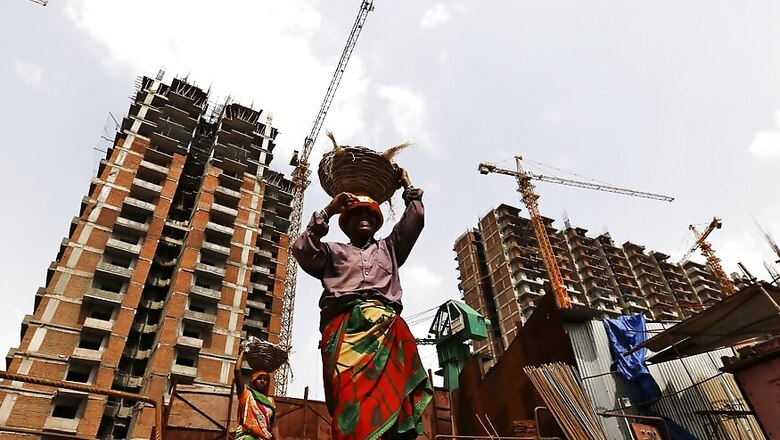
views
New Delhi: The pre-Budget Economic Survey tabled in the Parliament ahead of the last full-fledged Budget before the 2019 Lok Sabha elections has said that a rural woman spends 374 hours in a year in collecting firewood.
The survey also talks about the women in the labour force for being the most disadvantaged and that the gender gap in the labour workforce amounts to 50 percent.
"Among the developing countries, gender gap in labour force participation rates exists. But in India, it is more than 50 percentage points," the survey prepared by Chief Economic Advisor Arvind Subramanian and his team stated.
The survey that was tabled in the Parliament on Monday further stated that women workers make up for a significant section among the low-skilled informal worker category and are engaged in low-productivity and low-paying work.
Also, a lower participation of women in economic activities such as jobs, negatively affects the growth of the economy. The survey further noted that the government has been taking measures to increase the participation of women in productive economic activities with schemes to provide support services to working women and also through legislative measures to enhance maternity benefits.
Moreover, it also stressed on the political empowerment of women saying their representation in Parliament and in decision making roles in public sphere is one of the key indicators of a country’s upliftment.
As per the report 'Women in Politics 2017 (IPU & UN)', the Lok Sabha had 64 women MPs (11.8 per cent of 542 MPs) and the Rajya Sabha had 27 (11 per cent of 245 MPs) in 2017. Also, as on October 2016, out of the total 4,118 MLAs across the country, only 9 percent were women.
Among the state assemblies, the highest percentage of women MLAs were from Bihar, Haryana and Rajasthan — 14 percent — followed by Madhya Pradesh and West Bengal — 13 per cent — and Punjab with 12 percent, stated the Women & Men in India 2016 report by Ministry of Statistics and Programme Implementation.
The survey further said that between 2010 and 2017, women's representation rose by only 1 percent in the Lok Sabha. It also pointed out that there are developing countries like Rwanda, which has more than 60 percent women representatives in Parliament in 2017, while countries like Egypt, India, Brazil, Malaysia, Japan, Sri Lanka and Thailand have less than 15 percent representation of women.
Speaking on labour reforms, the survey said that the codification of labour laws is expected to remove the multiplicity of definitions and authorities leading to ease of compliance, without compromising wage security and social security to the workers.
The government is in the process of rationalising 38 Central Labour Acts by framing relevant provisions of existing laws into 4 labour codes viz Code on Wages, Code on Safety and Working Conditions, Code on Industrial Relations and Code on Social Security and Welfare. The draft code on Wages Bill 2017 was introduced in the Lok Sabha in August 2017 and referred to the Standing Committee on Labour for examination. The other three Codes are at a pre-legislative consultation stage.















Comments
0 comment